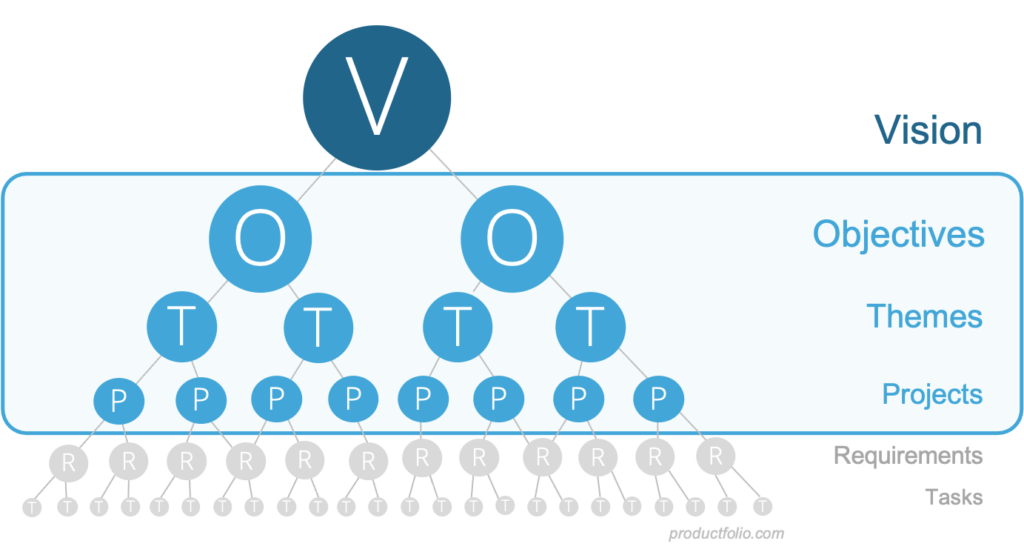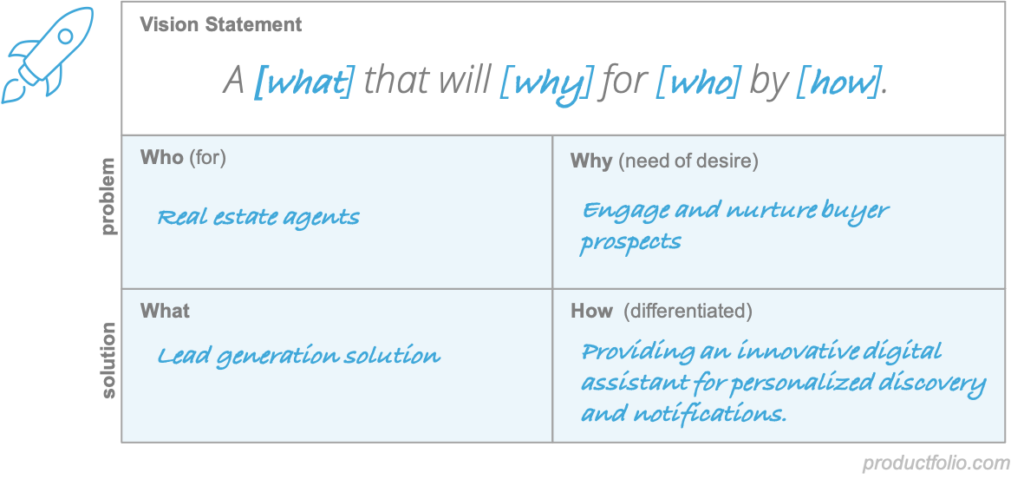Product Vision Template
A product strategy is a vital requirement for building a successful product. But before coming up with one, you need to have a strong product vision. Think of the product vision as the cornerstone of or precursor to the product strategy. One tells the direction that the product is heading while the other describes how to reach there.

Creating a solid product vision that gets the job done may not be easy. Product managers don’t always get them right, sometimes ending up with statements that make the work of teams more difficult. Having a product vision template to work from can help in developing an effective, unambiguous statement.
Short Does It
Look around. You will observe that some of the most effective product vision statements are not too long. Effectiveness here is based on the success of associated products. For instance, the vision of Instagram is “To capture and share the world’s moments” and Google’s is “To provide access to the world’s information with one click.”
Without providing too much information, the above single-sentence statements provide great clarity. Anyone working on the teams of these companies can take a quick look at them and immediately know what direction is in focus. As much as possible, you should aim to limit your vision statement to a single sentence. Keep it short and sweet. Your vision should be easy to say, memorize and communicate.
A Simple Template
When it comes to creating a single-sentence vision statement, the Product Vision Template by Neal Cabage can be of immense help. It provides an easy guide on how to create a product vision that is not only simple but also effective.

This basic template will help you to more easily come up with a one-sentence statement that describes what you want your product to become in a few years and which everyone has to work toward. You will find it useful for creating a product vision that takes into account both problem and solution spaces.
The format for creating an effective, one-sentence vision statement goes thus:
A [what] that will [why] for [who] by [how]
“Who” and “Why” are key questions in the problem space while “What” and “How” relate to the solution space. To make it easier to create your succinct, powerful vision statement, answer the questions in the following order:
- Who – Who is your ideal customer? Identify the customer segment(s) that you think your product will be perfect for.
- Why – Why do you think it’s worthwhile to provide the solution in focus? Pinpoint the benefits it offers and why you think your target market will be willing to pay for it.
- What – Specify the product that you are thinking of developing or have developed. What is it?
- How – This question isn’t about how to develop the product. Rather, it is about determining the ways the solution solves the problem for the customer or user. What is the value proposition? In what new way does it create value?
Having answered the above key questions, you then find a way to cleverly come up with a one-sentence product vision statement. Here’s an example by Cabage using the format for an imaginary “automated lead nurturing solution for real estate agents”:
“A personalized real estate discovery assistant that will find and nurture qualified leads for real estate agents by being the first to leverage the voice-enabled platforms to provide search and notification services for buyers.”
Inspire with Your Product Vision
The product vision is one of the three most important elements of a product strategy – the other being objectives for prioritization and the product roadmap. It is the story that makes people to be interested in what it’s being built. Therefore, you must make your product vision as inspiring as possible. Try to give everyone involved the sense that their work will make a difference for some people or groups. This helps to keep them motivated to see to the achievement of the goal.
Working just to get paid rarely results in great products. An inspiring story or statement that gets people excited and promotes team alignment is critical.


